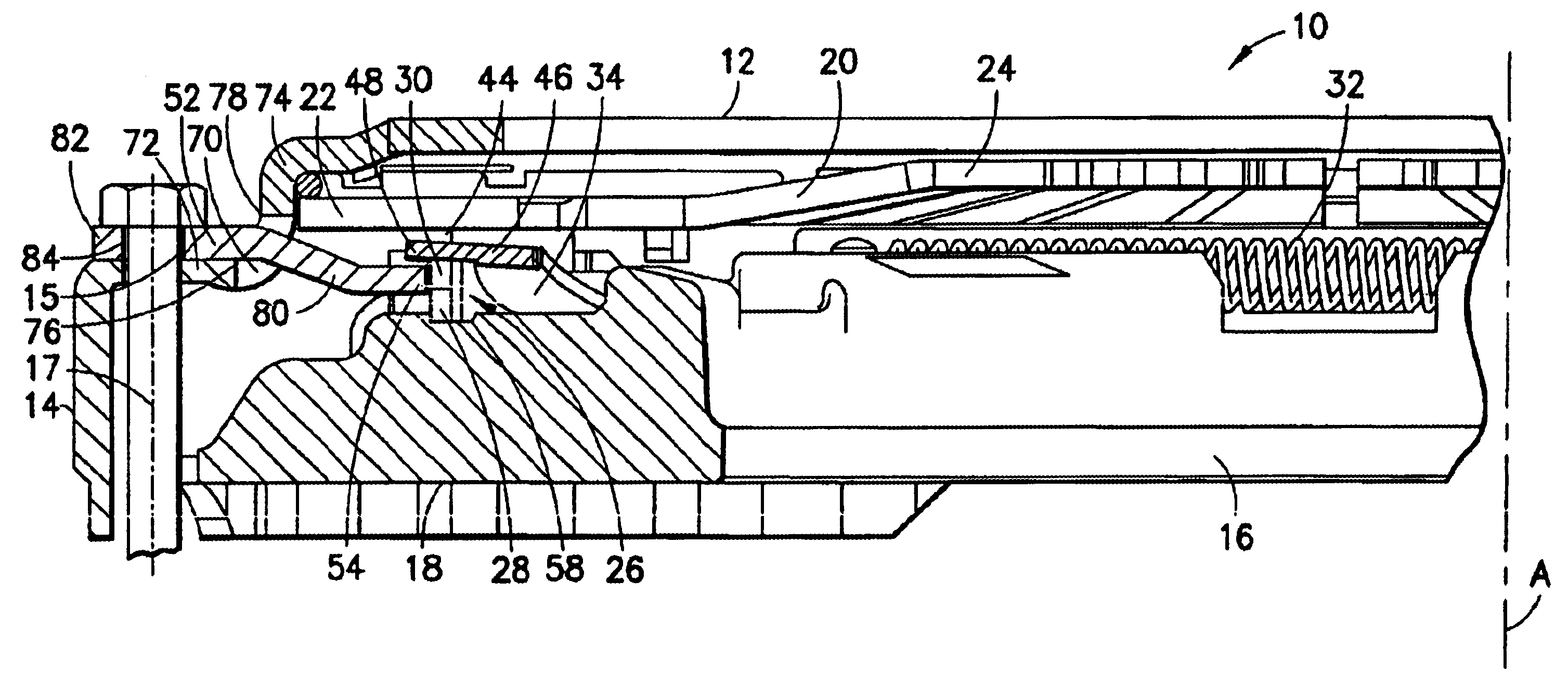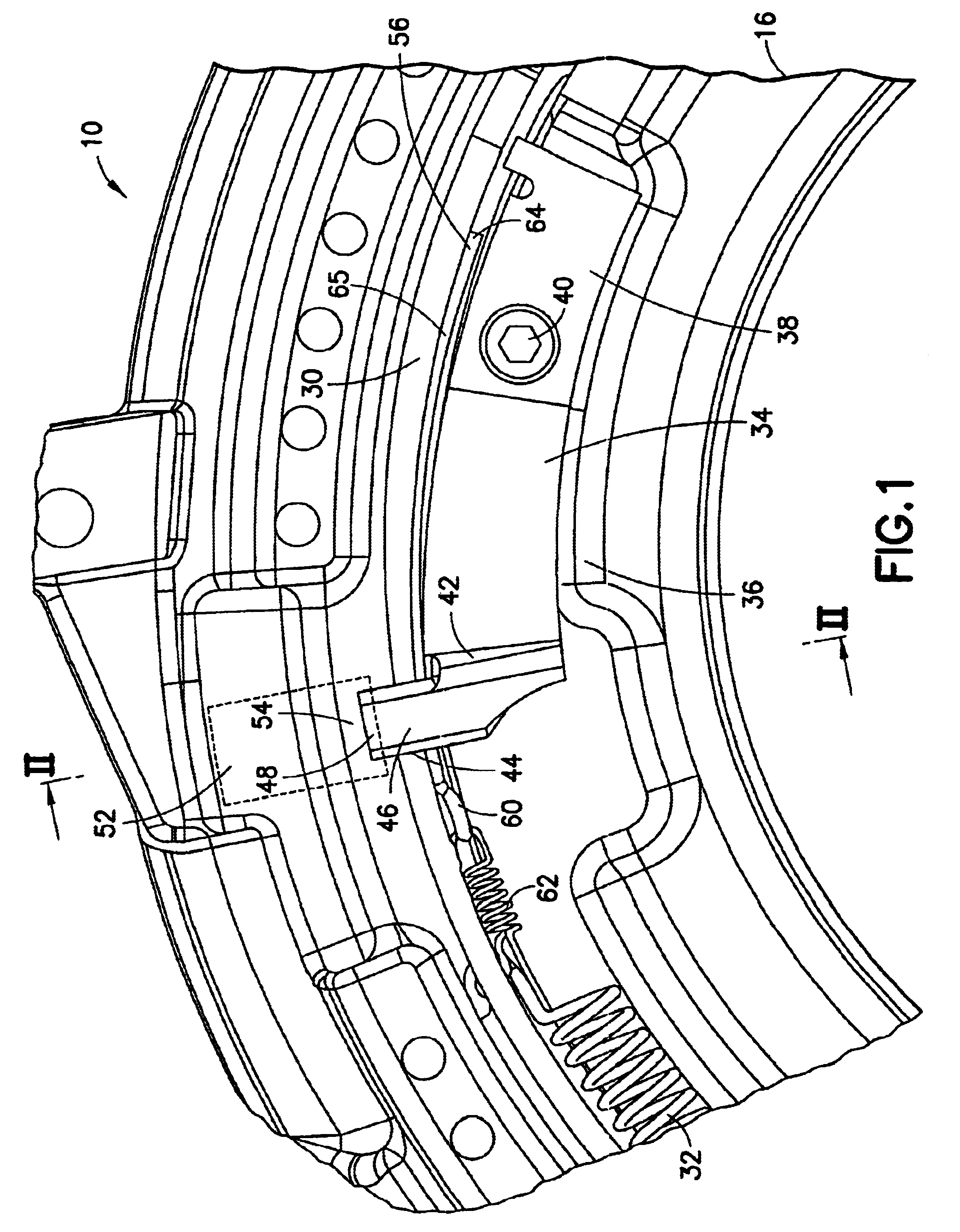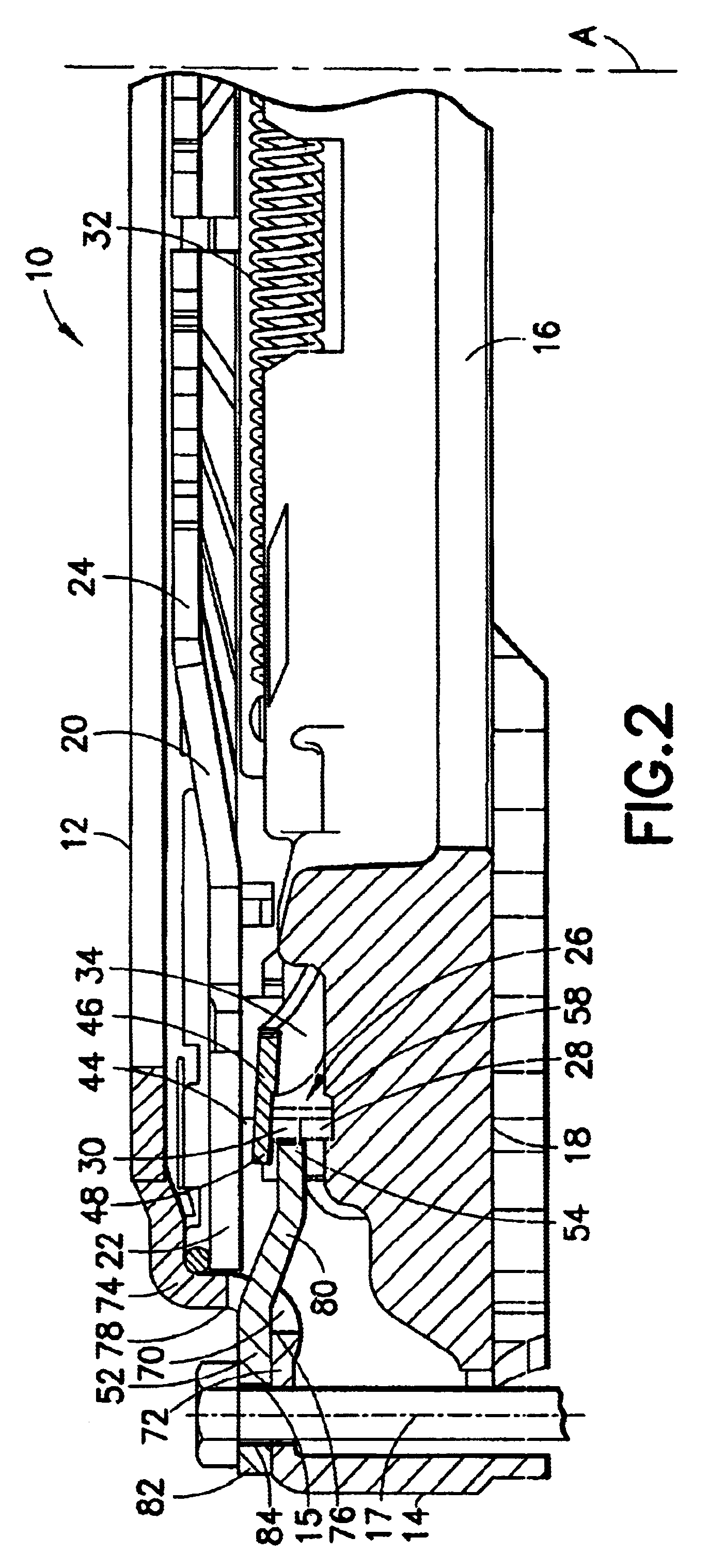Pressure plate assembly
a technology of pressure plate and assembly, which is applied in the direction of friction clutches, interengaging clutches, and clutches, etc., can solve the problems of unplanned wear-compensating adjustment, blockage elements that can interact with the gripping elements, and complicated process
- Summary
- Abstract
- Description
- Claims
- Application Information
AI Technical Summary
Benefits of technology
Problems solved by technology
Method used
Image
Examples
Embodiment Construction
The pressure plate assembly 10 shown in FIGS. 1 and 2 comprises a housing 12, which is designed to be connected to a centrifugal mass arrangement (not shown in the figures) such as a single-mass flywheel or possibly a multiple-mass flywheel. The radially outer edge area 14 of the housing arrangement 12 points toward the centrifugal mass arrangement, and the free axial end of this area can have end stops, for example, which determine the relative axial positioning between the housing arrangement 12 and the centrifugal mass arrangement. The housing arrangement 12 and thus the entire pressure plate assembly 10 is fixed in position relative to the centrifugal mass arrangement by a plurality of threaded bolts 17, which pass through openings 15, which are distributed around the housing arrangement 12 in the circumferential direction, which bolts can be screwed into assigned openings in the centrifugal mass arrangement. To arrive at the required relative axial positioning here between the ...
PUM
 Login to View More
Login to View More Abstract
Description
Claims
Application Information
 Login to View More
Login to View More - R&D
- Intellectual Property
- Life Sciences
- Materials
- Tech Scout
- Unparalleled Data Quality
- Higher Quality Content
- 60% Fewer Hallucinations
Browse by: Latest US Patents, China's latest patents, Technical Efficacy Thesaurus, Application Domain, Technology Topic, Popular Technical Reports.
© 2025 PatSnap. All rights reserved.Legal|Privacy policy|Modern Slavery Act Transparency Statement|Sitemap|About US| Contact US: help@patsnap.com



